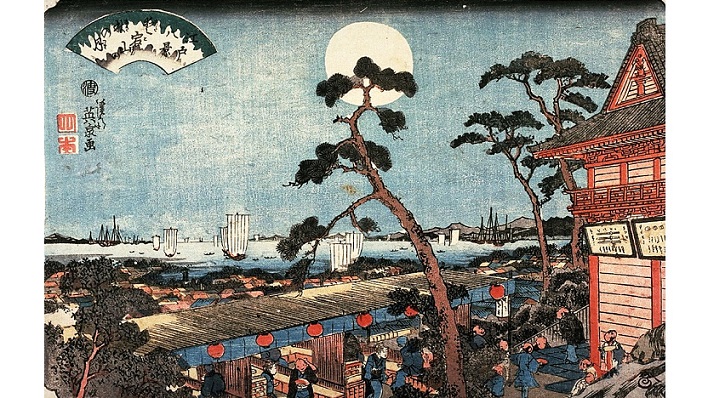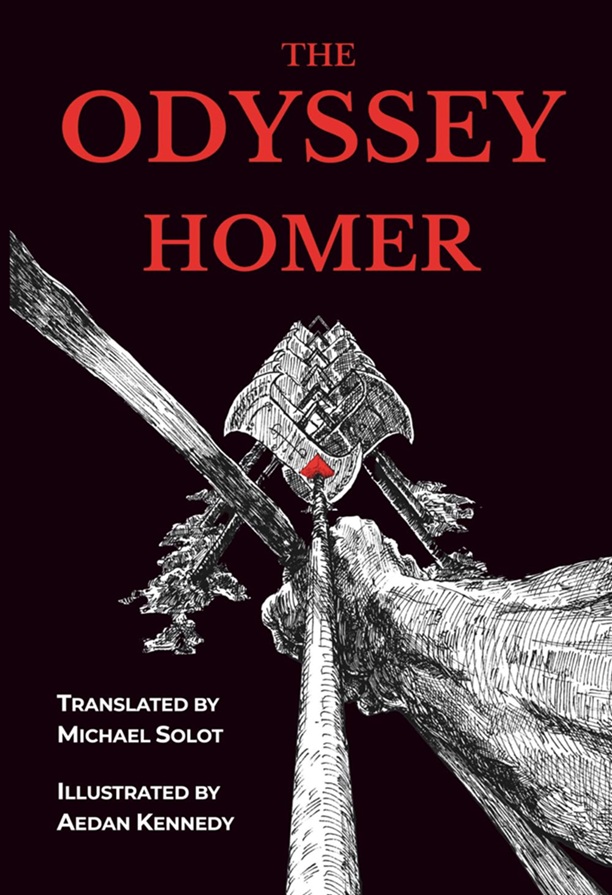The Mid-Autumn Festival, also known as the Moon Festival and corresponding to the Harvest Moon in the West, falls this year on October 1.
Lanterns in the Autumn Dark
Mid-Autumn’s guests head homeward, in the night,
Beneath the sphere that mirrors daytime’s glow.
In silver hues of air, distinct shapes grow
And fill their eyes, which map what route is right…
Amid surroundings of vast thought, their bright,
Round lanterns carry back lost sunbeams’ flow,
Rekindled from the joy to help all know
Lives’ purpose, weight and place, revealed in light.
The group treads through the fallen leaves. It seems
Each shape, each hue’s unclear, but they adapt
And show the moonbeams’ angle that can guide
Our learning of what’s true and what’s mere dreams.
As they recall the path that daylight mapped,
The moon retraces scenes the dark would hide.
Learning from a Grapevine
While looking out the window, I observe
A world of teachings for the inner self.
A vine now seems attention to deserve—
There’s food for thought on Nature’s every shelf.
Its greenness gives a sense of youth of mind;
Embracing sunlight, value it receives
As when it sips the rain—with any kind
Of weather it can bear, the vine perceives
Each change and challenge as a chance to grow.
When caught by winds, it bends but still hangs on:
It’s never rigid but it won’t let go
Of its support that’s there for each new dawn.
Come Autumn, leaf by leaf it dies. A string
Of life inside yet waits… rebirth in Spring.
Daniel Magdalen is a doctoral student in the Faculty of Letters at the University of Bucharest, in Romania.















Very nice work. Welcome !
.
Thank you!
Ho-hum. The verse is sound, but no new ground has been broken. Many of the lines seem flaccid, untouched by the spark of inspiration. You need to focus on specific & trenchant ideas, and not dwell so much on worn-out generalities. In short, I thought these two poems were banal, like the white bread one can find every day in fast-food venues. Look deeper into yourself, and don’t be content with what comes first to mind.
Finding deeper meaning and expressing ideas in a more impactful manner is a suggestion I very much appreciate. Thank you. Besides the common words and, to some extent, the imagery, there are ideas which in essence are simple but quite rarely found in people’s thinking and perspective on things, and these were the core og what I aspired to convey. The second poem, for instance, mainly shares the insight that one may find meaning in every aspect of one’s surroundings, when adopting a mindful and constructive view on things. Reminders of relevant virtues, failings and so on can thus be seen quite everywhere and begin to be addressed or worked on. This perspective I consider worth sharing, as it helps develop mental associations, the noticing of logical relationships between seemingly unrelated things but meaningful when integrated into a coherent view of the world. This is an example of a point I wanted to meke with the poems. I think ideas are important, especially fruitful ones, and efficiently and artfully communicating them is something I aspire to do. It would be interesting to see an example of a way that you, as an experienced poet, consider fit to make an idea more impactful through poetry.
Daniel, thank you for these two thoughtful, descriptive poems, reflections on your observations of culture and nature with a well-placed life-application in the closing sestet/stanza. Each poem in its turn is quiet, gentle and soft—like the light from an autumn moon festival lantern.
Thank you for your kind and insightful words. I appreciate your observations concerning the meanings these poems convey.
The “Lanterns” poem uses a highly appropriate and effective conceit. When “bright, round lanterns carry back lost sunbeams’ flow,” we realize that these lanterns are eyes. Real, candle-lit lanterns do not get their light from lost sunbeams; only eyes glow with memories of yesterday’s sun. This is real artistry. In the sestet, you extend it, by showing that eyes also shine with the softer light of moonbeams. The moral points you make are suited to the season, and to the situation of people returning from moon viewing.
“Grapevine” is entirely a moral poem based on nature. This is a kind of poem abundant in classical cultures, though then as now, some readers are impatient with the genre. But we don’t have enough of it as well done as this!
Happy moon-viewing, Daniel!
I appreciate your kind words and your deep, insightful observations. Thank you!